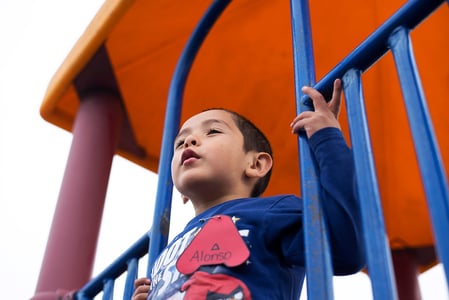
At the QRIS National Meeting in July, I sat in on a session about the next generation of quality rating and improvement systems (QRIS) and learned about how Arizona and two counties in Florida are shifting their thinking and plans to ensure continuous quality improvement. Having recently written a case study on Arizona, I reached out to Katie Romero again and had the opportunity to interview Katie and her colleague from First Things First, Leslie Totten, to learn more about the upcoming changes. Here’s the skinny:
What’s going on in Arizona?
The Quality First system is going through a time of reevaluating its model and determining shifts it will be making in the framework as a whole.
Why now?
Arizona’s QRIS is funded by tobacco tax revenues. They are declining (that’s a good thing!), so funding for Quality First will likely decline as well (not as good of a thing). This sets the stage for some forward thinking on scaling while ensuring the dollars match the plans.
What do you mean by scale?
Right now, Arizona serves 35-40% of licensed and regulated child care centers. Quality First considers scale serving all providers in the state.
That seems like a big undertaking. What's the plan?
Arizona has engaged in two undertakings:
- Forming a subcommittee of the First Things First board to make recommendations about how to shift the model - Approximately 25 stakeholders from across the QIRS (think providers, licensing organizations, the DOE) will suggest changes to assessment, coaching, and how to model participant engagement differently. These recommendations will go to the board in the early spring.
- Engaging in a validation study of the current QIRS model - a national evaluation firm will conduct an 18 month study with three goals:
- Review the current model
- Evaluate the data collection process
- Look at the five-star rating scale to see if the cut scores are accurately differentiating quality and recommend any changes
And remind me, what does Arizona’s CLASS implementation look like, and how has that changed over time?
As of July 1, Arizona is including Toddler CLASS as part of the star ratings (previously, it was just Pre-K). You can read about this phased age-level rollout in the case study, but an interesting thing to note is how Arizona decided to average scores across the Toddler and Pre-K age levels. Based on recommendations from Teachstone, Quality First averages the Toddler domain of Emotional and Behavioral Support with the Pre-K Emotional Support Domain, the Toddler domain of Engaged Support for Learning with the Pre-K Instructional Support Domain, and then allows Classroom Organization to remain its own separate domain. Quality First is now beginning its Infant CLASS roll out, training assessors and coaches, and providing reports so that providers can learn more about the tool before it is included in the ratings in 2019.
Looking back over the past few years, what are some of the big lessons learned?
Change happens—it’s necessary to keep pace with the early childhood environment and to ensure program needs are met—and flexibility is essential. The key to adapting to this change is communicating with key constituents to ensure they know that the changes are designed to improve practice and support young children.
While system change is inevitable, benchmarks should remain steady to ensure quality. This means quality is challenging, but it’s attainable. In July 2012, .06% of programs were hitting quality levels. Three years later, 53% of participating programs are achieving quality benchmarks; that’s a huge trajectory of improvement.
Over the past three years, we’ve learned that transparency is critical. We now hold annual forums about the Quality First program to discuss upcoming changes and ensure that the public is well informed. We go on annual road shows to host forums without agendas where the public can ask questions. We’ve had to answer a lot of questions about CLASS and we are open about how decisions were made, what assessors are looking for, and how assessors remain reliable. This makes a huge difference in openness to the tool and our ability to implement the program.

